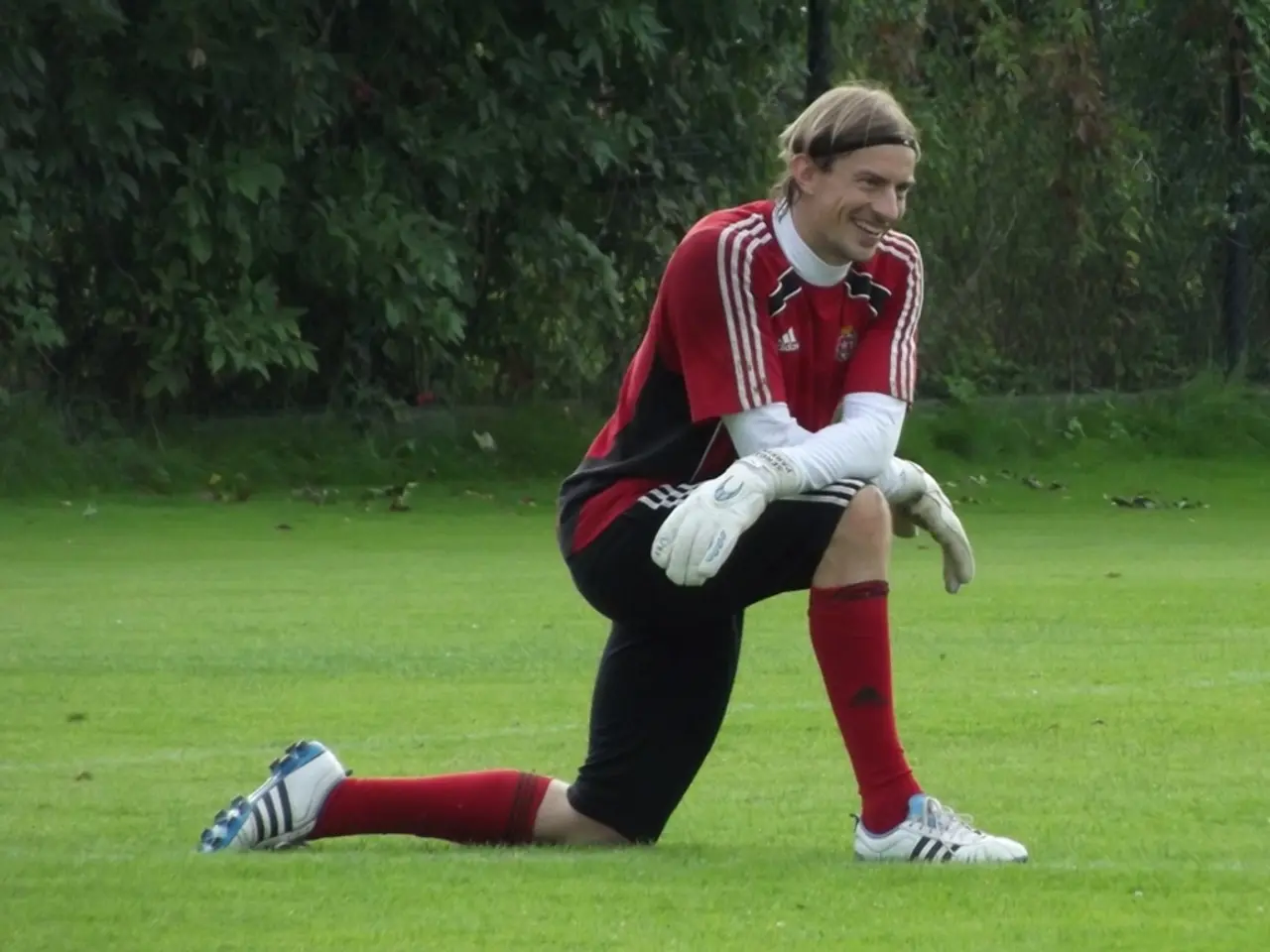Kneeling-Induced Knee Discomfort: Understanding the Root Causes and Beyond
Knee pain is a common issue that affects many people, especially those who are active or engage in activities that require frequent kneeling. This article aims to provide an overview of various causes of knee pain and the treatments available.
Common Causes of Knee Pain
Knee pain can be caused by several conditions, including bursitis, arthritis, and patellar tendonitis.
Bursitis
Bursitis is the inflammation of bursae, fluid-filled sacs near the knee. Prepatellar bursitis, in particular, can result from prolonged kneeling, causing localized pain, swelling, warmth, and tenderness in front of the kneecap.
Arthritis
Arthritis, particularly patellofemoral arthritis, involves wear or inflammation in the joint surfaces around the kneecap. This can lead to pain during activities like kneeling or squatting.
Patellar Tendonitis
Patellar tendonitis, also known as jumper's knee, occurs when the tendons connecting the kneecap to the shinbone become inflamed, causing pain especially when kneeling or bending the knee.
Treatments for Knee Pain
Treatments for these conditions generally involve initial conservative care, medications, physical therapy, activity modification, and, in some cases, advanced treatments or surgery.
Initial Conservative Care
Rest from aggravating activities, ice application (15–20 minutes multiple times daily), compression with knee sleeves, and elevation to reduce swelling are common initial measures.
Medications
Over-the-counter NSAIDs (e.g., ibuprofen) can help decrease inflammation, while acetaminophen can provide pain relief. Corticosteroid injections may be used to reduce inflammation in bursitis or arthritis cases.
Physical Therapy
Physical therapy focuses on correcting faulty movement patterns, strengthening surrounding muscles (quadriceps, hamstrings, glutes), improving flexibility, and joint alignment to reduce strain and prevent recurrence.
Activity Modification
Avoiding or modifying activities that provoke pain, such as prolonged kneeling, is essential.
Advanced Treatments for Arthritis
Viscosupplementation injections to lubricate the joint may be tried, though their effectiveness is still under study. Surgical options include arthroscopic smoothing of joint surfaces, realignment of the kneecap, cartilage grafting, or total knee replacement in severe arthritis cases.
Bursitis treatment often focuses on reducing inflammation and avoiding pressure on the bursae, while patellar tendonitis benefits from targeted strengthening and stretching and sometimes injection therapies.
Other Conditions and Treatments
Osgood-Schlatter Disease
Osgood-Schlatter disease is a condition that affects the knee and is characterized by pain and swelling at the shin bone where it meets the kneecap. It is most common in adolescents who are active in sports that involve running and jumping. Treatments may include rest, ice, compression, elevation, physical therapy, and, in some cases, surgery.
Patellofemoral Syndrome
Patellofemoral syndrome, or runner's knee, is a common knee condition that causes pain at the front of the knee around the patellofemoral joint. Symptoms include pain and swelling when bending or straightening the knees due to repetitive motion. This condition usually responds well to exercise and lifestyle changes.
Osteoarthritis (OA) of the Knee
OA of the knee is a common cause of knee pain and is characterized by structural changes to the joints over time that damage the cartilage. Treatments may include medication, physical therapy, assistive devices, surgery, and lifestyle modifications.
When to Seek Medical Help
If you experience any of the following symptoms, it is advisable to consult a doctor: a new significant trauma within the last 7 days, the knee is misshapen or immediately swollen following a recent injury, inability to put weight on the leg, the knee becomes immediately swollen, knee locks or gives way, knee is tender.
In summary, knee pain when kneeling from bursitis, arthritis, or patellar tendonitis is managed initially with conservative measures—rest, ice, NSAIDs, and physical therapy—with invasive interventions reserved for persistent or severe cases. Proper treatment and care can help alleviate knee pain and improve overall mobility.
- Macular degeneration, a common eye condition affecting the aging population, can lead to vision loss and blindness if left untreated.
- Colitis and Crohn's disease, types of inflammatory bowel disease, may cause symptoms such as abdominal pain, diarrhea, and weight loss.
- AQ (Absent Quantitative), a term in diagnostic testing, refers to a sample with insufficient material for analysis.
- Dry skin, often caused by cold weather, low humidity, or certain skin conditions, can result in itching, flaking, and cracking.
- Repetitive stress injuries, such as carpal tunnel syndrome, can occur due to excessive and continuous movements of the hands, wrists, and arms.
- HIV is a viral infection that weakens the immune system, making the body vulnerable to other infections and diseases.
- NSCLC (Non-Small Cell Lung Cancer) is a type of lung cancer with different subtypes, stages, and treatment options.
- Sclerosis, both multiple and single, is a condition characterized by hardening and thickening of soft tissues, such as the brain, spinal cord, and skin.
- Preparation, or prep, refers to any actions taken before a specific event or task to ensure readiness.
- Ulcerative colitis and Crohn's disease are both chronic inflammatory bowel diseases that cause symptoms like diarrhea, abdominal pain, and weight loss.
- In the realm of science and health-and-wellness, workplace-wellness initiatives focus on promoting employee health through programs and policies.
- Fitness-and-exercise routines, along with mental-health maintenance, good skin-care practices, and nutritional choices, play essential roles in therapies-and-treatments for overall well-being, including the management of conditions like CBD (Cannabidiol) therapy for certain medical conditions.




